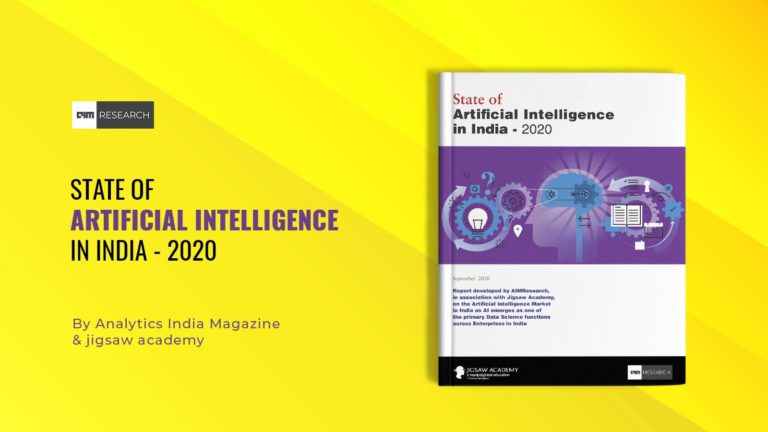There are two Kirana stores in my neighborhood market. Their square footage is almost the same and they both offer similar products. The only differentiating factor between the two is the customer experience they both offer; one is really lousy at it, whereas the other excels at it. Guess which of these stores gets my business? It’s obviously the one where I – the customer – feels valued and gets a personalized experience. According to Epsilon, 80 percent of consumers are more likely to do business with a company that offers personalized experiences.
“Most businesses understand personalization. It’s when you utilize any attributes that your customer has shared with you. For example, their name, or location or gender, etc. So if you send an email or push notification, with your customer’s name in the subject line and show offers/deals in their city – that’s personalization,”
Raviteja Dodda, Founder and CEO of California-based MoEngage Inc explains Analytics India Magazine.
It’s usually the first step towards customer-centricity. It requires a small data-set and can even be done manually. However, brands have taken personalization to the next level and it’s called hyper-personalization.
“It is performed when the volume of data is large, more parameters of the user behavior is known and the business objectives are clearly defined. It is quite challenging to perform manually and needs a combination of expertise in data science along with creativity in writing the right content for the right user persona. Only the most customer-centric companies can achieve the right results with hyper-personalization,”
said Sujoy Chaudhary, Cofounder & CEO of Airim, in an exclusive conversation with Analytics India Magazine.
Delaware-based Airim offers an AI-fuelled personalization engine for users and customers and was acquired by B2B SaaS-based enterprise tech startup, Whatfix. Chaudhary explains that the most commonly applied case of hyper-personalization is showing the most relevant FAQs to a user on a website automatically. This is made possible by collating and analyzing user data such as current location, the source ad he/she came from, past clicks, user device (mobile or desktop) and even their regional language. A signed-in user’s experience can be further personalized by gathering intel about the user from registered data such as current organization, age group, gender and much more.
Another example that Manish Sehgal, Partner, Deloitte India shared with us is that of a user browsing for green shoes on an app; spending around 15 minutes and leaving without purchasing. A quick analysis of the data left behind the user reveals the following:
- An affinity for buying discounted goods
- Prior search and purchase history for ‘X’ footwear brand
- Maximum purchases happening on a Sunday from 6-9 PM in the night
- Push notifications having the highest user engagement in the past
“Now, a hyper-personalized campaign would send a push notification to the user’s mobile device advertising a flash sale on X brand’s green shoes on a Sunday, preferably between 6-9 PM,” He added.
Please Take It Personally, It’s Just Business
Although we cannot deny the high ROI quotient of hyper-personalization and it’s the ability to garner leads and rake-in the revenue; not many marketers have a hyper-personalization strategy in place. According to an Ascend2 report titled, ‘Hyper-personalization Strategies’ only about 9% of surveyed marketers admitted to having completed the development of a hyper-personalization strategy – the early adapters. The majority, totaling 62%, are either just discussing about it or haven’t taken any action about hyper-personalization yet.
Hyper-personalization is yet to become the chosen form of brand-consumer engagement in India, however, there is immense scope for the successful implementation of this MarTech strategy due to the extensive reach of internet connectivity – especially mobile internet.
“India is a mobile-first market. Millions of people in India, experienced the internet for the first time, through their mobile phones. I feel that mobile-first and new age brands in India are a lot more sophisticated and hyper-personalized in their communication, compared to other developed countries,” Dodda opined.
“Hyper-personalization is quite nascent worldwide, but India offers a huge opportunity because studies show that in this country, nearly 45 crore monthly active internet users spend over 3.5 hours a day on the internet. This is huge and brands are investing highly in initiatives to win over these customers with a better experience. Hyper-personalization plays an important role here, as a wow experience is key to building long-lasting relations with a customer,” said Chaudhary.
He opined that brands from various sectors such as E-retail, financial services, and even education industries, are earmarking a significant portion of their digital marketing spend to creating a hyper-personalized experience for their prospects as well as existing customers. “Interestingly, the budget for these initiatives in India’s consumer industries are now being owned by product teams rather than marketing, which has led to new tools and new job profiles being created,” he added.
Talking about tools, even Dodda stated that brands that use Customer Analytics and AI-driven marketing automation tools like MoEngage usually witness up to 5x improvement in their customer retention rates.
How Data Fuels The Hyper-personalization Engine
The process of Hyper-personalization is not a manual process as this level of customization requires combing through mountains of data, predictive analysis, and various other integral tools and processes that work together seamlessly as the cogs of a well-oiled communication engine capable of real-time targeting results. This engine is fuelled by data.
The more customer data a brand possesses, the more personalized and targeted its communication can get. The traditional marketing approach involved segmentation and personalization. However, as AI tech evolves, creating a more robust and intuitive machine learning and reinforced learning algorithms, marketers are moving towards micro-segmentation and hyper-personalization.
Micro-segmentation is the layering of numerous first and third-party data sets to identify granular clusters of individuals. A brand’s first-party data set refers to its in-house customer and visitor information. This helps the brand to identify its most valuable segments. “Accurate micro-segmentation is essential to create content that truly resonates with customers because it enables the company to get a clear picture of what the audience needs, what they value and how they behave. Advanced customer segmentation uses cross-channel behavioral insights and data from internal and external sources to discover and define audience segments, enabling you to deliver highly personalized marketing messages,” explains Global VP of Content Marketing at e-Spirit.
Craig Teich, Executive Vice President of Global Sales at Connexity, said, “Rather than looking at target ‘groups,’ marketers can layer rich sets of first- and third-party data to identify hyper-relevant segments based on attributes like lifestyle, interests, attitudes, purchase behavior, search behavior, panel data, buyer stage and much more. The result is a rich mosaic of tens, hundreds or thousands of micro-audiences, rather than just 10 or 20 segments.”
Brands can sift through third-party data sets to identify customers that are similar to their own best customers, in order to widen their customer base.
How To Source The Right Data Set
The success of hyper-personalization relies immensely on collating the right set of data. According to a survey, a majority of marketers consider applying data insights to decision-making as the most challenging barrier to the success of a hyper-personalization strategy.
So, how can brands collate the right data sets? According to Chaudhary, Once the source of data has been identified, the business stakeholders should come on board to define an ideal business outcome. After that, a team of data engineers can work on the right architecture to collect the data, data analysts can write the relevant queries, a business analyst or a product manager can define the audience for the communication of this data and content writers can work on creative ways to make the user experience better.”
“Data scientists might have to get involved in evaluating the success of this data along with product managers, tweaking the algorithms where necessary, until the perfect business outcome is achieved,” he added.
Data Management Platforms (DMP), Customer Relationship Management (CRM) and Customer Data Platforms (CDP), Marketing Orchestration (MO), and Digital Messaging (DM) platforms are some of the key platforms used for data collections. DMP collect behavioral data from first-party websites, partner websites (second-party), and audience data from third-party sources.
“MO platforms collect millions of data points on customer interactions from campaign engagement, browsing behaviors, purchase history, etc., and analyze them using Artificial Intelligence (AI) algorithms to determine the next best actions and messaging, driven by customer-centered business KPIs,” explained Sajith Thayappalli, Senior Director Marketing Technology, Merkle.
DM platforms are a collection of software tools that facilitate the creation, delivery and response tracking of bulk email communication.
CDP connects data collected from every consumer point of contact, across multiple channels and over time; providing the marketer with a 360-degree view of the customer. It may sound a lot like CRM, but it’s different. “CDP goes beyond a CRM in terms of automatically capturing user behavior and interaction data from across channels. Updating the CRM is largely a manual exercise, making complete compliance a challenge in larger companies. CDPs are less dependent on humans to operate, so they can capture data at a larger scale with better efficiency,” said Chaudhary.
“Hyper-personalization can run successfully only when analytics tools work efficiently with customer communication tools. Ideally, the user data should flow seamlessly from a CDP to BI tools and then to marketing automation and CX tools,” he added.
Even with the right set of data and all the necessary tools and framework in place, brands can still go overboard with this MarTech strategy. Hyper-personalization is cool and an effective way to engage your customers, but a slight oversight can push your brand into the creepy realm, making your customers lose trust in your brand. Read all about it in Part II



















































































